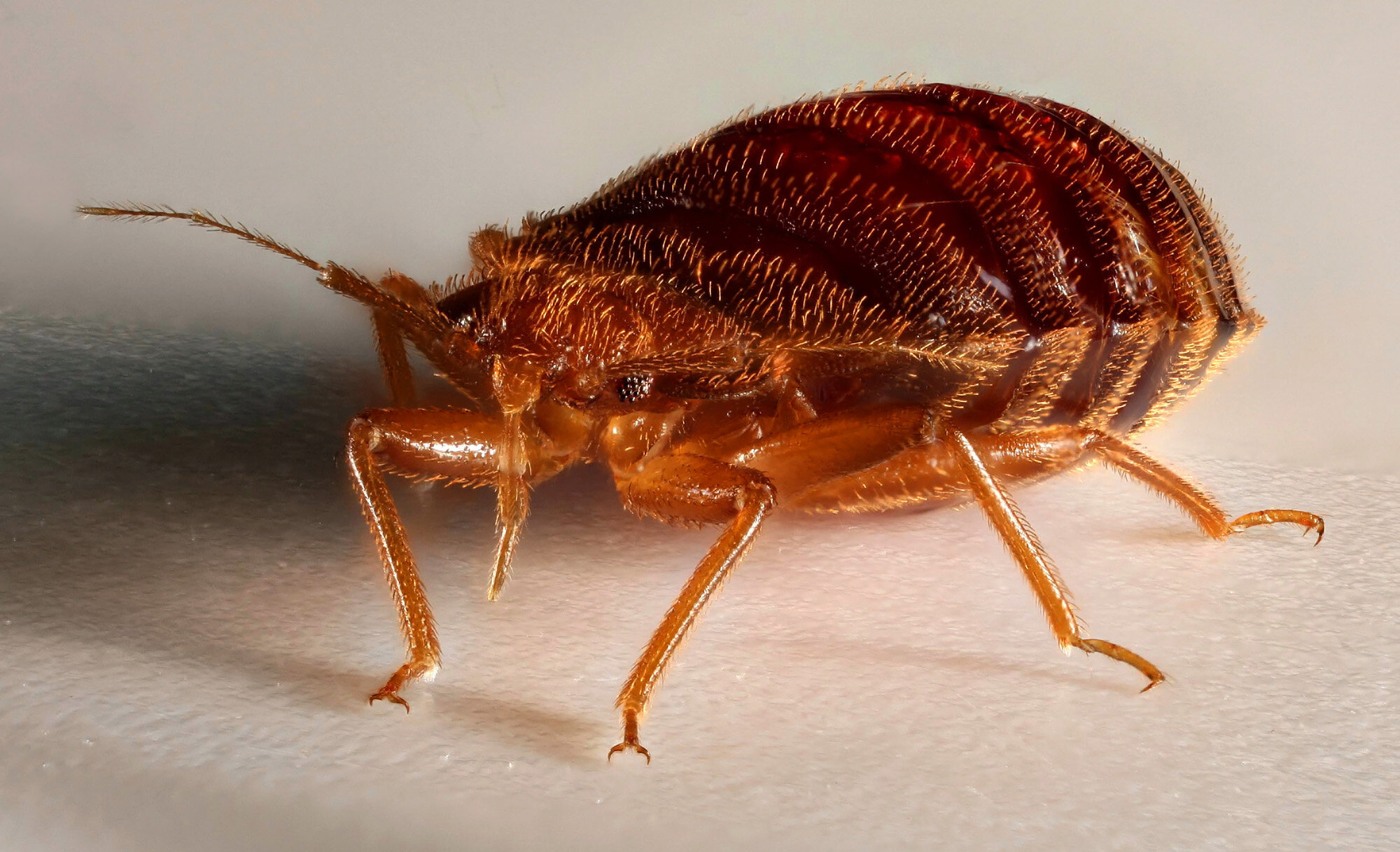In today’s page of Talmud, we read of an important dispute: does hair grow from its roots, or its tips?
איבעיא להו האי מזיא מלתחת רבי או מלעיל למאי?... ת"ש מהא אינבא חיה דקאים בעיקבא דבינתא ואי סלקא דעתך מלתחת רבי ברישא דבינתא בעי למיקם. לעולם מלתחת רבי ואגב חיותא נחית ואזיל אינבא
ת"ש אינבא מתה ברישא דבינתא ואי סלקא דעתך מלעיל רבי בעיקבא דבינתא בעי למיקם התם נמי משום דלית בה חילא שרוגי שריגא ואזיל...
A question was asked: Does hair grow from the roots or the tips?...Let us suggest an answer from the live nit [or louse - meaning is not certain] which is found at the root of a strand [of hair]. Now if the hair grew from the root, shouldn't the nit be found at the tip? [The Talmud rejects this suggestion:] The growth may well be from the tip, but the nit, being alive, continually moves down [towards the root].
Let us suggest an answer from the case of a dead nit [or louse, that is found] at the end of a strand [of hair]. If the hair grows from the end, shouldn't the dead nit be found near the root? [The Talmud rejects this suggestion too:] Perhaps the dead nit has no power [to grasp the hair] and so as the hair grows from the root, the nit slides.
The louse nit (egg) with its adherent cylindrical sheath cemented to the hair shaft. The free distal end (arrow) would be directed towards the hair tip. The egg has a domed operculum (arrow) that contains air holes, allowing the maturing larvae to breath.From Burkhat el al. The adherent cylindrical nit structure and its chemical denaturation in vitro. Arch. Pediatric Adolescent Medicine 1988. 152; 711.
Pediculosis Humanus Capitas
Pediculosis Humanus capitas is the long scientific name of the tiny head louse. The female, less than 3mm long, lives for about a month, and in that time lays over three hundred eggs. The eggs are laid on a shaft of hair close to the scalp, where, warmed by the skin of their itchy host, they incubate for two weeks before hatching. The new lice emerge, grow for about 12 days, mate, and lay their eggs, and the cycle continues. Humans are the only known host of these lice, and somewhere in this cycle you as a parent may get a call to come and take your child out of school because they have been found to have head lice, or nits, the name given to their eggs. About 15% of school age children in the UK have head lice, while in the US estimates range from 6-12 million infestations per year. In the US, the cost to treat those millions of infestations is more than $350 million.
True story: Many years ago while working in an emergency department in Boston, I received a call from the (warm and loving Jewish) preschool my children then attended. My daughter had head lice, and so she could not attend class. I gently explained that I could not leave my shift in the ED to come and get her for as trivial a reason as head lice, but the school was adamant. She remained outside the classroom until arrangements to pick here up were made. I do hope the psychological damage was minimal.
Updated true story: That daughter, now herself a mother and a pediatrician, and living far from Boston, recently received a letter from a Jewish preschool informing parents that children in whom hair lice had been found would be sent home. She wrote a gentle email to the preschool director, pointing out that both the American Academy of Pediatrics and the National Association of School Nurses have produced clear, evidence based guidance that states the following:
Both the American Academy of Pediatrics (AAP) and the CDC advocate for the following practices to be discontinued:
- whole classroom screening,
- exclusion for nits or live lice,
- notification to others except for parents/guardians of students with head lice infestations
But her concerns fell on deaf early childhood learning ears. The preschool declined to change their policy. I suppose we should be happy that our preschools are following their mesorah, evidence be damned.
“The AAP states that head lice screening programs in schools have not been proven to have a significant effect over time on the incidence of head lice in the school setting, are not cost-effective, and may stigmatize children suspected of having head lice. ”
Head Lice in Antiquity
Head lice have been with us for a long, long time, as evidenced by the Talmud's clear acquaintance with them. Amazingly though, remains of a head louse have been identified on a louse comb from the Roman period that was discovered near the Dead Sea. (Even older remains have been found on the hair from Egyptian mummies, and nine-thousand year old lice eggs were found on human remains in Nahal Hemar near the Dead Sea.) "The comb was most probably used by inhabitants of the village of En Gedi, who were preparing a place of refuge in the cave, which would have been well equipped with food in baskets, storage jars and a large water pool before the end of the Bar Kokba Revolt in 135 CE."
Wooden comb found in the Cave of the Pool, near Nahal David in the Dead Sea region. It was discovered in 1961. From Mumcouglu and Hadas. Head Louse (Pediculus humanus capitis) Remains in a Louse Comb from the Roman Period Excavated in the Dead Sea Region. Israel Exploration Journal, Vol. 61, No. 2 (2011), pp. 223-229
“May this [ivory] tusk root out the lice of the hair and the beard”
In 2022 the Jerusalem Journal of Archeology published a paper that described the discovery in Lachish of an ivory comb with an inscription in early Canaanite script. It contains seventeen letters, in early pictographic style, which form seven words expressing a plea against lice. This makes it “by far the oldest alphabetic inscription that contains a full sentence.” It dates to around 1700 BCE - only a century after most scholars believe the alphabet was invented.
Here is how it was reported by the Biblical Archeology Society just four months ago:
So what does the oldest Canaanite sentence say? “May this [ivory] tusk root out the lice of the hair and the beard,” a fitting inscription to grace a comb. Remarkably, analysis of the comb provided evidence that this inscription, possibly termed a spell, was effective, as the remains of a louse were discovered on one of the comb’s teeth.
Crafted of elephant ivory, likely imported from Egypt, the comb would have been a prestige object, owned by a wealthy family. “It would have been like a diamond today, a crème de la crème luxury item. Others likely had lice combs too, but made of wood that would have decayed,” Yosef Garfinkel, Lachish excavator and a co-author of the study, told Haaretz. The tiny size of the comb (it measures just over an inch long) left little room for the 17 Proto-Canaanite letters written on it, which together make up seven words.
According to epigrapher Christopher Rollston of George Washington University, “Of course, this is also an object that was commissioned by, and owned by, a very wealthy family. After all, who else would have the money to commission a scribe to write an inscription on a hairbrush! The high caliber of the script and orthography, the fact that it is written on a prestige object, and the fact that it was found at a strategic military site, combine to make the most convincing conclusion that it was written by a trained, professional scribe.”
Although the teeth of the comb were broken off in antiquity, their bases remain. One side of the comb featured six thick teeth, used to untangle knots. The other side had 14 finer teeth, used to remove lice.
The ivory comb was uncovered during excavations of the famous site of Lachish in the Shephelah region of southern Israel. However, the comb itself was found in a secondary deposit. Because of this, it was not possible to date the comb according to other finds in the area. Instead, the comb’s date was determined through paleography (the form of the comb’s letters). According to the team, analysis of the script showed that it was very archaic, with several features that do not show up in later versions of the Canaanite script.
Remains of a head louse nymph between the teeth of the Lachish comb. From here.
chimen abramsky, IsAac Bashevis SINGER & Head Lice
In 2015, Sasha Abramsky published The House of Twenty Thousand Books, about the life and library of his grandfather Chimen Abramsky (1916-2010). Chimen (pronounced Shimon) was the son of the great Dayan Yechezkiel Abramsky, (1886-1976) who was head of the London Beth Din. Chimen, who eventually became a professor of Jewish Studies at University College London, was an expert on Jewish books and built a significant collection of his own, which is detailed in the book. Chimen also served as an advisor to Sotheby's and to the late Jack Lunzer, who built the greatest privately owned Jewish library in the world. Anyway, I came across this passage in the book, reminding us that presence of head lice was not just an annoyance - it was a way of life:
Infant and childhood mortality soared in these years [of the First World War] in part because of the prevalence of diseases such as typhus - which presumably explains why, in early photographs, the heads of Chimen and his brothers are shorn, to counter the typhus-carrying lice.[Ed. note: head lice do not carry typhus, but are certainly a nuisance.] Isaac Bashevis Singer, who was a few years older than Chimen, and like Chimen was brought up in a devout household...recalled having his sidelocks and head hair shaved off for this reason during the First World War...he wrote in his essay "The Book"..."I saw my red sidelocks fall and I knew this was the end of them. I wanted to get rid of them for a long time." (Sasha Abramsky. The House of Twenty Thousand Books. NYRB 2015. 57-58.)
For the Nazir, hair is a central part of his religious identity, and once that identity is no-longer needed, the hair is shaved off. Which is exactly what Isaac Bashevis Singer felt too.











